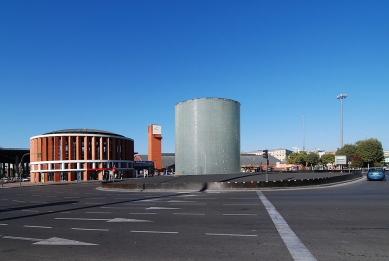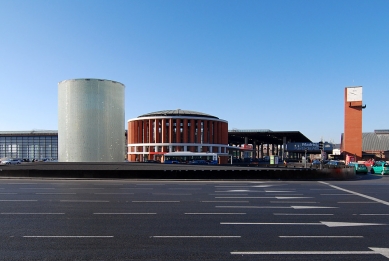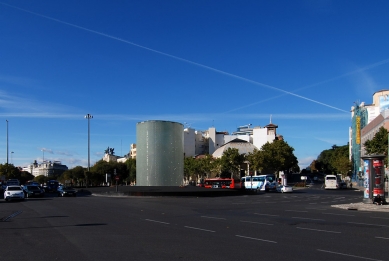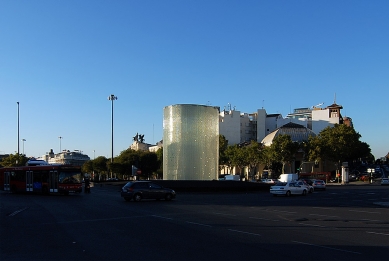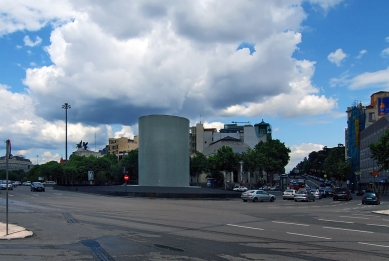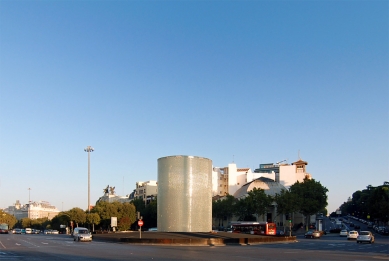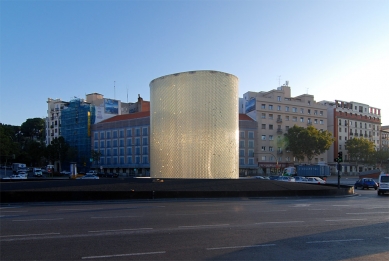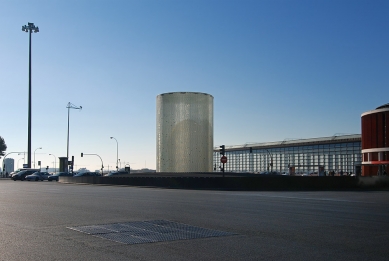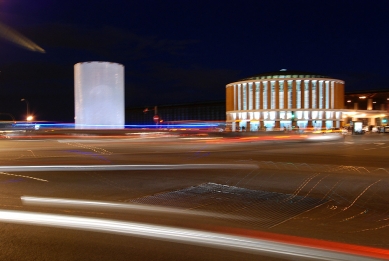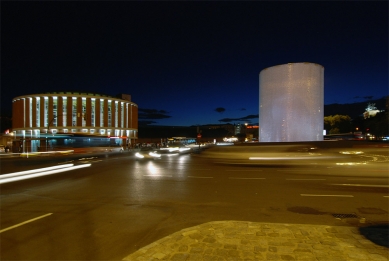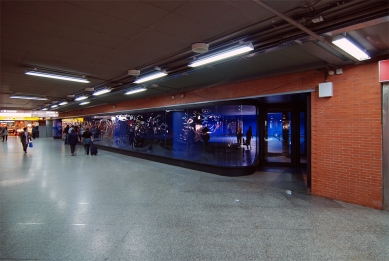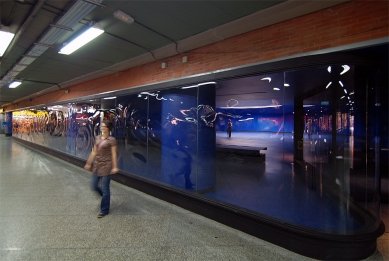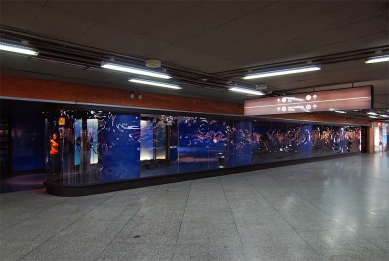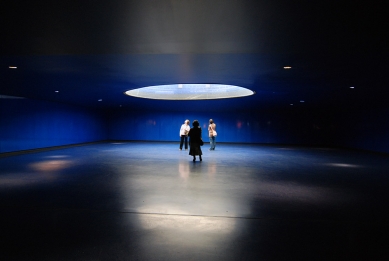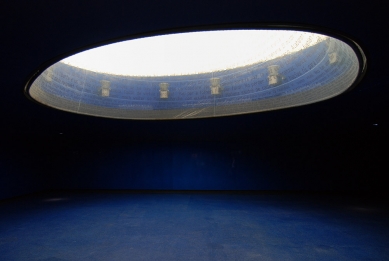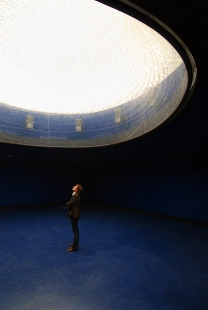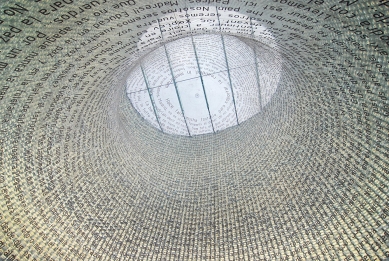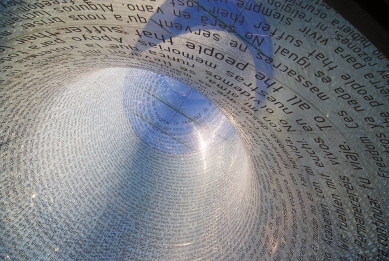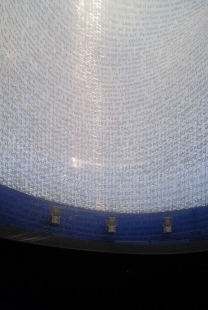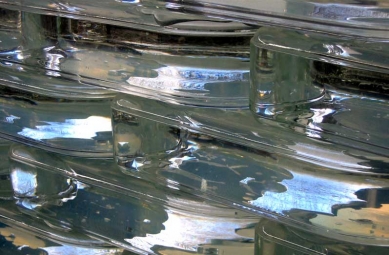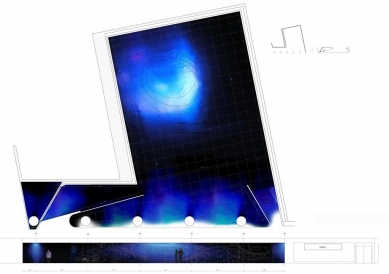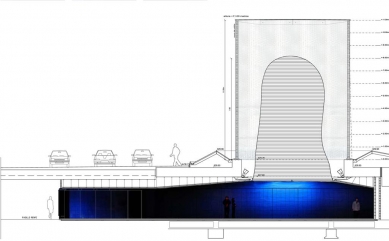
Memorial 11-M, Atocha

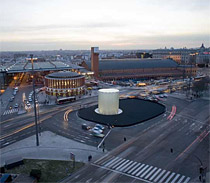 |
The complete monument consists of two parts, the glass cylinder and an underground presentation room. Both parts are linked together by a round window. This is designed to create the impression that the memorial, as a “shimmer of hope”, rises up towards the city from the depth of the train station, the “site of sorrow”. Inside the glass cylinder, spontaneous expressions of sorrow from citizens were engraved into a transparent plastic film. Each day at sunrise and sunset, the incident light illuminates these, thanks to the transparency and illuminating power of the glass construction.
The luminous monument is built of 15,000 curved glass blocks glued together with a liquid-acrylic material hardened by ultraviolet lamps. Inside the tower, an ETFE membrane is printed with hundreds of messages left at the station by mourners in the days after the bombings. Thousands of messages of condolence made in the days after the attacks are inscribed on the inside of the tower. Sunshine hitting the column of glass bricks focuses light into an empty, blue chamber below a busy highway, which the public can access via Atocha station. From below, visitors can peer skywards to read hundreds of messages of condolence and support wrapped around the inside of the cylinder. After dark, the volume radiates softly in the sky from lights in the opening at its base; during the day, sunlight produces an ethereal glow as it filters through the glass tower and reflects off the deep blue surfaces in the underground chamber.
All day long visitors stream through a double set of steel-and-glass security doors into the chamber, which is large enough to accommodate up to 200 at a time, and gaze upwards into the dazzling light. The otherwise dark chamber with blue walls, ceiling and floor, has no furniture apart from a long blackcoated steel bench with circular concave indents where one can sit in contemplation of life and death. Names of all the victims are engraved on a frosted glass panel between the first and second entrance doors.
Info from Estudio de Arquitectura FAM, 12.2007
0 comments
add comment


